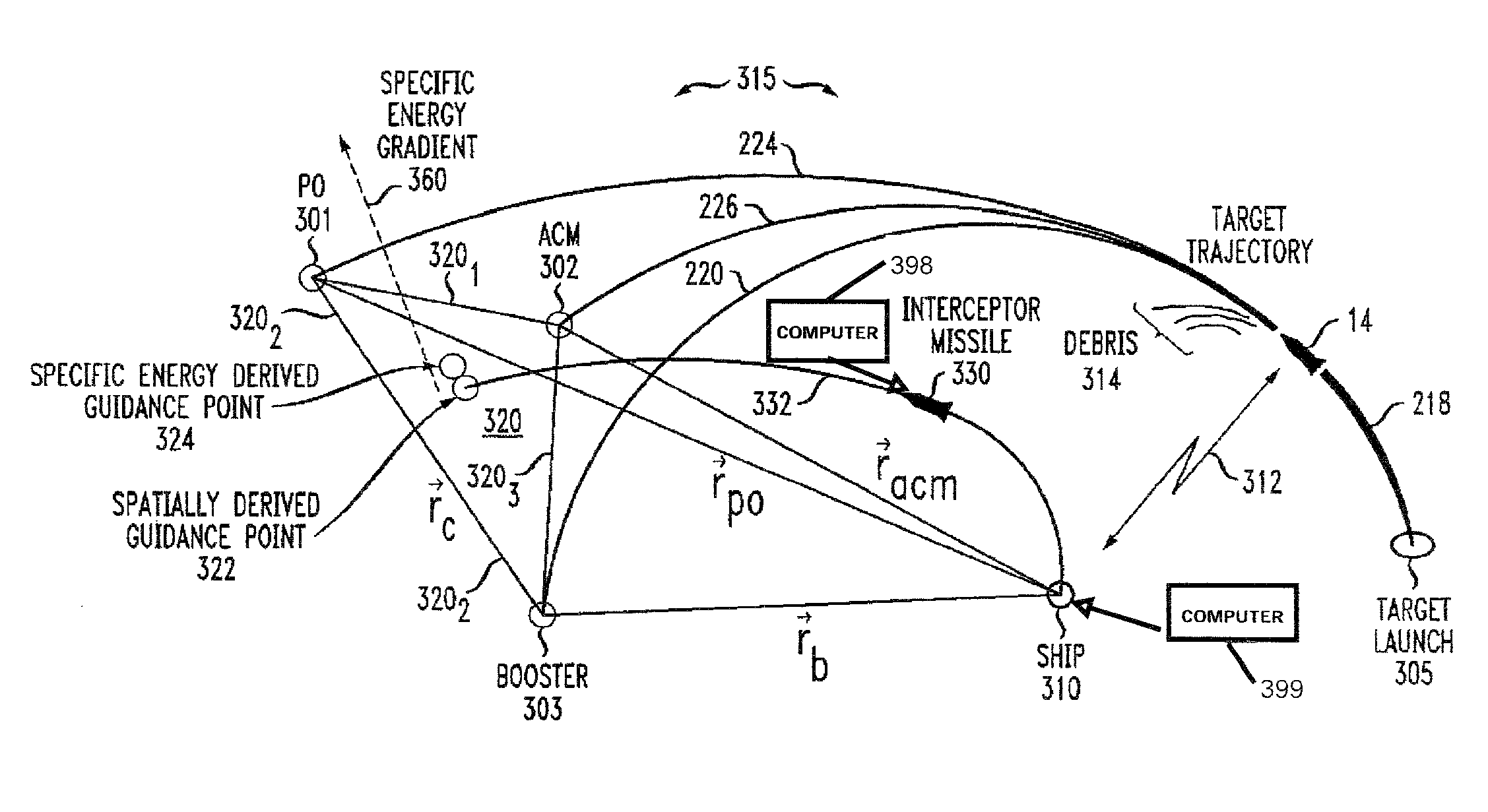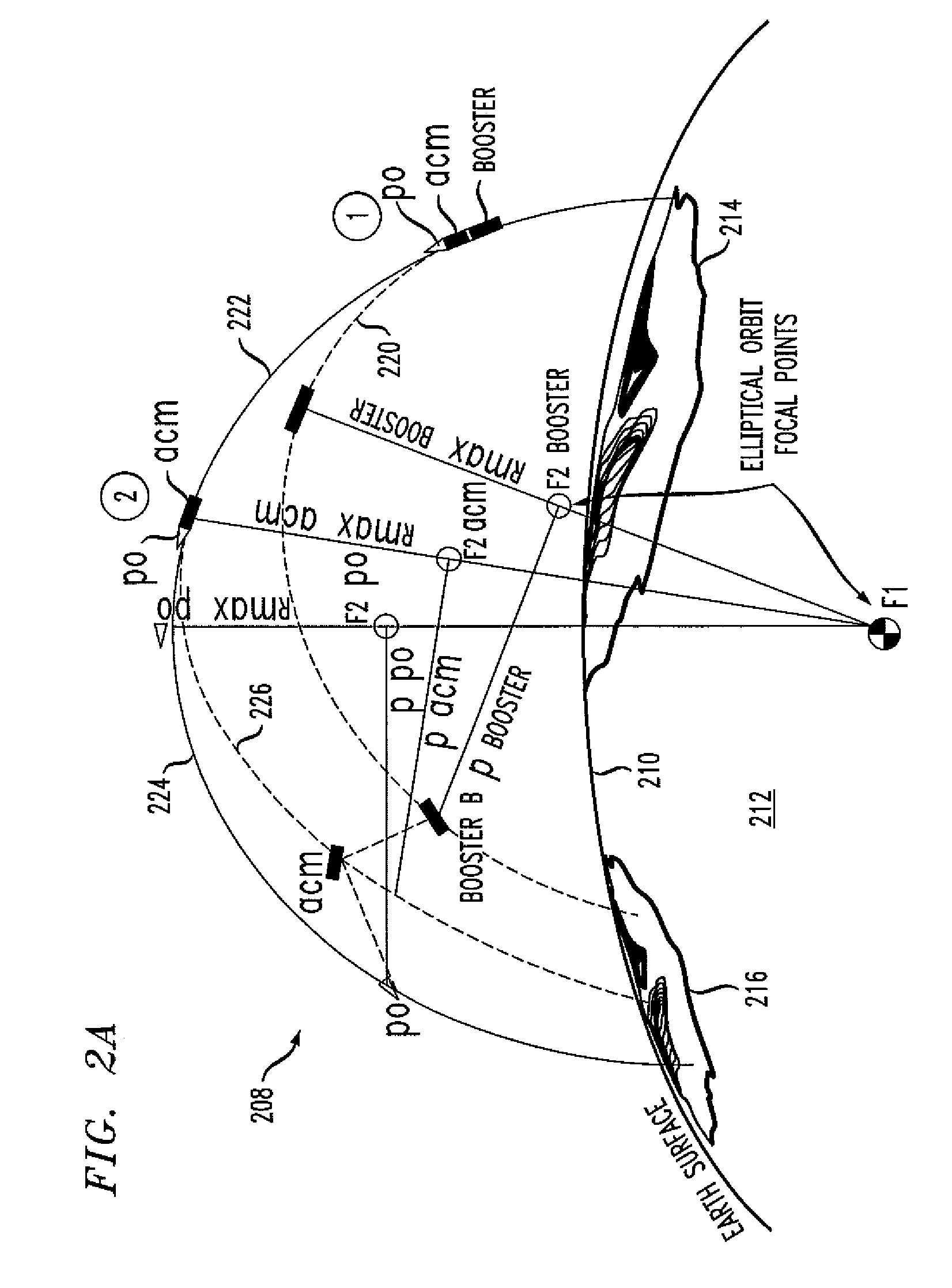Method for targeting a preferred object within a group of decoys
- Summary
- Abstract
- Description
- Claims
- Application Information
AI Technical Summary
Benefits of technology
Problems solved by technology
Method used
Image
Examples
Embodiment Construction
[0015]The “guide” point toward which the interceptor is guided is chosen so as to contain the preferred object (po) within the divert capability of the interceptor. This can be important because the objects of the ballistic group or cluster may diverge at a rate which does not allow all of them to be contained using the prior-art spatially derived guidance point method. It should be noted that the spatially derived guidance point lies in a plane which contains those three objects of a group having specific energy or specific angular momentum above a threshold value. According to an aspect of the invention, the interceptor aim, guide, or target point before terminal guidance begins is shifted or deviated away from the spatially derived guidance point and toward the preferred object. This allows containment of those objects likely to be the preferred object within the interceptor divert capability. The shifting or deviation of the guide or target point is based on orbital parameters o...
PUM
 Login to View More
Login to View More Abstract
Description
Claims
Application Information
 Login to View More
Login to View More - R&D
- Intellectual Property
- Life Sciences
- Materials
- Tech Scout
- Unparalleled Data Quality
- Higher Quality Content
- 60% Fewer Hallucinations
Browse by: Latest US Patents, China's latest patents, Technical Efficacy Thesaurus, Application Domain, Technology Topic, Popular Technical Reports.
© 2025 PatSnap. All rights reserved.Legal|Privacy policy|Modern Slavery Act Transparency Statement|Sitemap|About US| Contact US: help@patsnap.com



